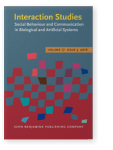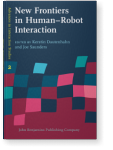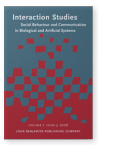Tatsuya Nomura
List of John Benjamins publications for which Tatsuya Nomura plays a role.
Articles
2016 Why do children abuse robots? Interaction Studies 17:3, pp. 347–369 | Article
We found that children sometimes abused a social robot placed in a shopping mall hallway. They verbally abused the robot, repeatedly obstructed its path, and sometimes even kicked and punched the robot. To investigate the reasons for the abuse, we conducted a field study in which we interviewed… read more
2011 Attitudes toward robots and factors influencing them New Frontiers in Human–Robot Interaction, Dautenhahn, Kerstin and Joe Saunders (eds.), pp. 73–88 | Article
Attitudes toward robots, in particular, negative attitudes are important factors influencing human perception and behaviors toward robots. The chapter surveys the existing studies using the Negative Attitudes toward Robots Scale for measuring these attitudes, and then reports a current study based… read more
2009 Age differences and images of robots: Social survey in Japan Robots in the Wild: Exploring human-robot interaction in naturalistic environments, Dautenhahn, Kerstin (ed.), pp. 374–391 | Article
In order to investigate the influence of participants’ age on their image of robots in Japan, a pilot research was completed by 371 visitors (male: 124, female: 246, age: from 2 to 80 years) at a robot exhibition held at a commercial facility in Japan, based on the questionnaire consisting of four… read more
2006 Measurement of negative attitudes toward robots Interaction Studies 7:3, pp. 437–454 | Article
A great deal of research has been performed recently on robots that feature functions for communicating with humans in daily life, i.e., communication robots. We consider it important to develop methods to measure humans’ attitudes and emotions that may prevent them from interaction with… read more



